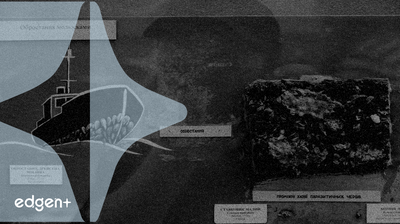Related News

Torr Metals Concludes 2,100-Meter Drill Program at Kolos Project, Targeting Key Copper-Gold Anomaly
## Executive Summary **Torr Metals** (TSXV: TMET) has announced the completion of its initial diamond drilling phase at the Bertha Target, part of the Kolos Copper-Gold Project in British Columbia. The 2,100-meter program was designed to test a significant geophysical anomaly that demonstrates geological characteristics comparable to the nearby New Afton Copper-Gold Mine. While the operational milestone has been met, the market now awaits quantitative assay results, which will be the primary determinant of the project's geological and financial potential. ## The Event in Detail The company confirmed the conclusion of approximately 2,100 meters of diamond drilling across seven distinct drill holes. This exploration effort was concentrated on the Bertha Target within its 332 km² Kolos Copper-Gold Project. The primary objective was to investigate a prominent moderate-chargeability induced polarization (IP) geophysical anomaly. Geologically, this anomaly is interpreted as a supergene oxidation horizon located at the contact point between a reducing picrite and an oxidized intrusive-volcanic complex—a setting conducive to copper deposition. ## Market Implications The completion of the drilling program is a neutral to mildly positive event for **Torr Metals**, as it confirms the company has successfully executed its stated operational plan. However, a significant rerating of the company's stock is not anticipated until the release of assay results. These laboratory findings are the critical catalyst required to validate the presence of economic-grade mineralization. Successfully finishing the drilling mitigates operational risk but does not yet de-risk the geological asset itself; that is entirely dependent on the forthcoming data. ## Expert Commentary Company statements emphasize that the geological environment is a "highly prospective redox and structural trap" for copper-gold mineralization. Management draws a direct geological analogy to the "upper levels of the New Afton Copper-Gold Mine," situated approximately 28 kilometers from the Kolos Project. This comparison provides a potential model for the mineralization style. The decision to drill to depth was reportedly bolstered by the presence of high-grade copper identified at the surface within the historic Bertha exploration pit, indicating the potential for a larger system. ## Broader Context This drilling program represents a crucial validation step in **Torr Metals**' strategy to delineate a potentially significant copper-gold system. For a junior mining exploration company, executing a drilling campaign on schedule is a fundamental milestone that demonstrates operational capability. The future valuation and project trajectory for the Kolos asset now depend entirely on the upcoming assay data. While the geological comparison to the New Afton mine offers a framework for assessing potential scale, it remains a speculative analogue until substantiated by direct drilling evidence.

Investors Scrutinize Undervalued Small-Caps as Broader Market Indices Decline
## Executive Summary Recent market activity indicates a notable shift in investor strategy, with a discernible pivot toward undervalued small-cap stocks as major indices face a broad downturn. Despite positive corporate earnings in some sectors, concerns over high valuations, particularly in artificial intelligence and other high-growth areas, have led to profit-taking in large-cap equities. Consequently, investors are increasingly examining the small-cap segment, represented by benchmarks like the **Russell 2000 Index**, for opportunities where insider activity and strong fundamentals may signal untapped value. ## The Trend in Detail The search for value in the small-cap space is data-driven, focusing on companies trading at a significant discount to their estimated fair value. This analysis prioritizes firms with robust financial health and positive cash flow. For instance, companies such as **PCB Bancorp (PCB)**, **Peoples Bancorp (PEBO)**, and **Tandem Diabetes Care (TNDM)** have been identified in market screens for exhibiting these characteristics. Two companies exemplifying this trend are **Viemed Healthcare (VMD)** and **Northeast Bank (NBN)**. **Viemed**, a provider of home medical equipment and respiratory healthcare services with a market cap of approximately $267.65 million, is noted for its strategic growth initiatives. Similarly, **Northeast Bank**, despite confronting challenges from increased competition and regulatory shifts, is recognized for its potential, driven by ongoing digital transformation efforts. Analysis of such companies often involves a detailed review of fair value estimates, insider trading activity, and overall financial condition. ## Market Implications The heightened interest in small-caps suggests a defensive rotation in a cautious market. While small-cap stocks traditionally carry higher risk, the current environment of perceived overvaluation in large-caps has altered the risk-reward calculation for many investors. This trend could lead to increased capital flows into small-cap focused funds and exchange-traded funds (ETFs), such as those tracking the **Russell 2000 Index**. The performance of this segment will be closely watched as a barometer of broader market risk appetite and the sustainability of the current economic cycle. ## Expert Commentary Analysts are employing a fundamentals-based approach to identify opportunities, emphasizing the importance of insider buying as a potential signal of confidence from those with intimate knowledge of a company's prospects. Value-rating systems, such as those provided by financial analysis platforms, are being used to screen for companies trading below their intrinsic worth. For example, analysis of **Northeast Bank** includes a detailed look at its dividend history, financial health, and insider trades to build a comprehensive valuation case. This method of forensic accounting and strategic analysis is becoming central to navigating the current market. ## Broader Context This small-cap focus is occurring within a global market grappling with dual concerns: the high valuations of established market leaders and the uncertain long-term profitability of recent technology trends like AI. The downturn in major indices, even against a backdrop of solid earnings reports, indicates that the market is repricing risk. The move toward smaller, fundamentally sound companies represents a classic search for value and a potential flight to quality, albeit in a higher-risk asset class. This trend underscores a growing belief that the next phase of market growth may originate from overlooked segments rather than the mega-cap stocks that have dominated returns in recent years.

Trump Announces Permanent Immigration Pause from Developing Nations and Review of Green Cards
## Executive Summary In a significant policy statement, former President Donald Trump announced his intention to "permanently pause migration from all Third World Countries." Concurrently, he has ordered the U.S. Citizenship and Immigration Services (USCIS) to conduct a "full and rigorous" re-examination of every green card issued to nationals from 19 specified "countries of concern." The directive, framed as a measure to protect public safety and national security following a shooting near the White House, introduces substantial uncertainty into U.S. immigration policy and carries significant implications for the nation's labor market and economic stability. ## The Policy Announcements in Detail The dual announcements represent a major potential shift in U.S. immigration protocols. The first component is a proposed permanent suspension of new immigration from a loosely defined group of "Third World Countries," with the stated goal of allowing the "U.S. system to fully recover." The second, more immediate action is the directive for USCIS to review the status of existing legal permanent residents. This review targets individuals from a list of 19 countries previously identified in a June travel ban. The list includes **Afghanistan, Burma, Chad, Republic of the Congo, Equatorial Guinea, Eritrea, Haiti, Iran, Libya, Somalia, Sudan, Sierra Leone, Venezuela, and Turkmenistan**, among others. According to USCIS Director Joseph Edlow, the updated guidance will enable officers to more thoroughly assess whether an individual poses a threat to public safety. ## Economic and Market Implications The proposed policies, if implemented, would have far-reaching effects on the U.S. economy. The primary market impact stems from the potential for significant labor supply shocks. Sectors such as agriculture, hospitality, construction, and healthcare have historically relied on immigrant labor to fill critical roles. A permanent pause on immigration from a wide swath of nations could exacerbate existing labor shortages, leading to increased wage pressures and potential disruptions to supply chains. Businesses that depend on a stable and predictable flow of workers face heightened operational risk and uncertainty. The broad and undefined nature of the term "Third World Countries" further complicates long-term planning for companies that utilize visa programs to source international talent. Furthermore, the policy is widely expected to face immediate and sustained legal challenges, creating a prolonged period of regulatory ambiguity that could deter investment and hiring. ## Broader Context and Precedent This move is part of a pattern of leveraging immigration policy in response to national events. The re-examination of green card holders from the 19 "countries of concern" is an extension of a previous travel ban, indicating a continuity of strategy. The directive to review the legal status of existing residents marks an escalation in immigration enforcement. While prior policies have focused on restricting new entries, this measure retroactively examines previously granted immigration benefits. This creates a precedent that could undermine the perceived permanence of green cards, potentially affecting the stability and integration of the immigrant workforce within the U.S. economy. The announcement is likely to generate international criticism and could strain diplomatic relations with the affected countries and U.S. allies.
